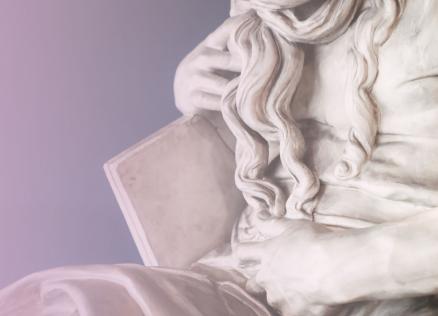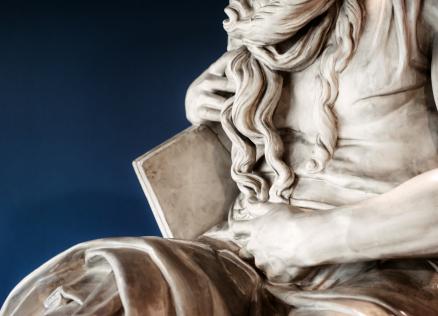Scientific lectures:
Authenticity in museum collections. Experience, critique and future perspectives
Marking the 4th anniversary of the Antique and Renaissance Plaster Cast Exhibition "Forest of Sculptures", on October 31 and November 1, an international series of scientific lectures on authenticity and originality in various fields of art will be organised at the Art Museum RIGA BOURSE.
Authenticity and originality are among the most important basic principles in museum collections. Authentic – one that corresponds to the original, one that is based on a primary source, unquestionable, indisputable, accurate, reliable, genuine, proven. The original is given a sacred value, while the copies are valued as secondary, as they often have no direct connection to a specific cultural heritage, yet they are still used in museums as material in teaching contexts and as a framework for creating a certain context. Therefore these lectures aim to explore the connections between authenticity and various forms of cultural heritage. Exploring these interconnections offers an opportunity to reflect on our relationship with culturalhistorical memory, belonging and identity, which interact with social, political, aesthetic and ethical dimensions. The scientific lectures are part of the cooperation of the permanent Antique and Renaissance Plaster cast collection exhibition "Forest of Sculptures" with foreign and domestic researchers, aware of the importance and versatility of the theme of authenticity in the contexts of casts, contemporary art, graphics and architecture.
Conference programme
Thursday, October 31st, 2024
Art Museum RIGA BOURSE, 6 Dome Square, Riga
Lectures in English with simultaneous translation into Latvian
Participant registration
9.30–10.00
Registration
10.00–10.15
Opening and introduction
Mag. Art. Mare Heimrāte-Patačīni, Curator of the Foreign Arts Department of the Latvian National Museum of Art
10.15–11.15
‘The View of the One Illuminates the Other’ – Casts of Ancient Sculpture and Contemporary Art
Dr. Lorenz Winkler-Horaček, classical archaeologist, curator, professor and manager of the exhibition of the collection of ancient casts at the Free University of Berlin
As one of the first places of its kind, the Cast Collection of Ancient Sculpture at Freie Universität Berlin confronted its casts of ancient sculptures with modern art. Since the reopening of the Berlin collection in 1988, over 120 presentations, installations and events with contemporary artists and photographers have taken place alongside the archaeological exhibitions and projects. The aim has always been to take a fresh look at the casts themselves. Because every change sharpens the perception of what can always be seen. This creative approach to antiquity and modernity, to copy and original, was by no means a matter of course in the 20th century. From the Renaissance until the end of the 19th century, casts of antique sculptures in particular were regarded as normative models for contemporary artists and formed an integral part of art academies. However, in the 20th century they were sometimes radically rejected by artists and art historians. As an expression of an outdated educational ideal and as lifeless copies they were insulted and smashed – the aura of the artist was now only seen in originals. Almost all art academies in (Western) Europe ‘got rid’ of the casts. Instead, they assumed a symbolic function for the overcoming of the supposedly eternal yesterday.
Today, the casts are ‘liberated’ from ideologically charged ideas. This allows us to see them for what they are: Important tools for research and teaching in archaeology and art history, as well as excellent means for modern art to engage with the past. The presentation illustrates the history of this relationship between artists and casts and shows examples of projects from the Berlin Cast Collection.
11.15–12.00
Authenticity in contemporary art, is it possible?
Mag. Art. Astrīda Rogule, Curator of the Contemporary Art Collection at the Latvian National Museum of Art
Contemporary art breaks from modernism and creates a massive shift towards conceptual art, new media, and interdisciplinary approaches.
The main concept of authenticity for a contemporary artist is based on topicality and immediate response and reflection of our rapidly changing world. A contemporary artist ignores or does not care the strictly defined and framed media, but blurs lines between disciplines and challenges traditional notions of what art can be. Even more – one artwork could be made from different materials and contain different media. The concept and content of an artwork have been emphasised by every possible way of the artistic/or nonartistic means.
For an institution dealing with collecting, preservation, interpretation, and communication of the contemporary art, first, a contemporary art museum it has become a challenge to do all the mentioned functions with a strong respect to authenticity.
The museum specialists have to reconsider a bunch of issues connected with main museum functions starting with acquisition of the artworks, their documentation, interpretation, exhibiting and preservation to be appreciated by future generations. If the museums have created theories and traditional practices for so called traditional visual art as painting, graphic art, drawing, sculpture, etc., the contemporary art specialists are facing continues, never-ending, and unpredictable challenges.
12.00–12.30
Coffee break
12.30–13.30
Reconstructions between archaeological documentation, aesthetic experience and the quest for historical authenticity
Dr. Katharina Mann, art historian, artist and reasercher of sculpture polychromy
In the last years, reconstructions have become a popular tool for presenting archaeological finds in an aesthetically attractive way to reflect their so-called historical authenticity. But what does historical authenticity mean in relation to many unresolved questions and conclusions based only on rudiments that have been found? This is particularly evident with colour reconstructions of antique sculptures, whose colourful painting has been lost over the centuries due to the fragility of binders and pigments, and with it often their aesthetic expression as well as their identity. Since the rediscovery of ancient sculptures in the Renaissance, an (art) historical misunderstanding has grown up that runs counter to the original aesthetic meaning of colour and form as a unit, as there is hardly any evidence of the original painting of the sculptures. Although we know for a long time that antiquity never existed in this monochrome white version as we present it in museums, this illustrates an elementary problem of our quest of historical authenticity. For even if the colour and therefore the final result seen by the viewers of antiquity is definitively lost, the only thing we can call historically authentic is the form sculpted in stone that the viewers of the time never saw in this way. What must or can reconstructions be able to do and how can this mediation tool be used without creating new historical misunderstandings? And how can AI help? Such questions and suggestions on the ethical problems of reconstructions will be outlined and commented on in the lecture.




